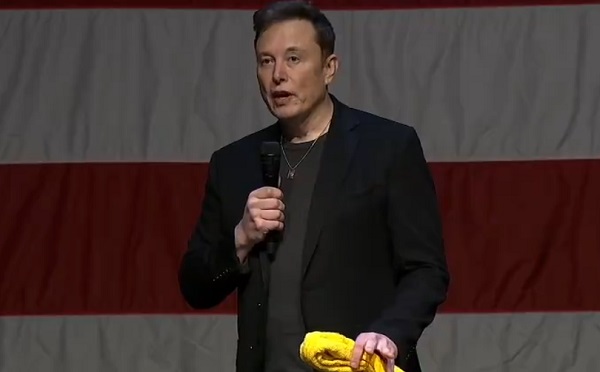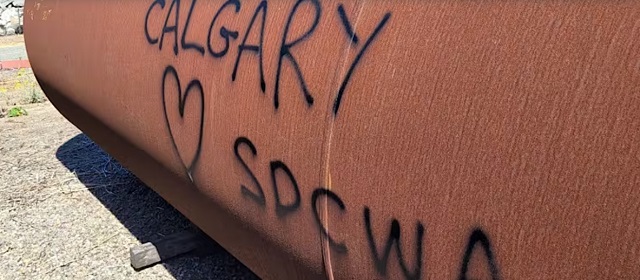Calgary
Threat or Opportunity? The Pending TRILLION Dollar Wealth Transfer
By Perry Kinkaide, MSc, PhD, CMC – Kinkaide Enterprises Inc.
Winning a lottery can have tragic results.
Millennials and charities may not realize they are about to win a lottery, arguably the most monumental economic, political, and social event of the 21st century.
It will be the largest, broadest, deepest intergenerational transfer of wealth in history: the transfer of $trillions of wealth accumulated by babyboomers as they retire and expire. I’ve been tracking and alerting others to the associated threats and opportunities, namely: financial planners and high-wealth people, government and early-stage entrepreneurs.
Some millennials are already anticipating and pre-spending their inheritance. Most are not!
Hence, the boom underway of financial planners, new investment services, and government’s interest in how to access private capital. What has not been discussed in any depth is the impact of the wealth transfer on innovation and public services such as health and education.
The impact is expected to be profound and should be stirring a public policy discussion engaging those expecting more or less from governments.
Since the end of WWII, we’ve seen an extraordinary growth of government at all levels. Yet, debt worldwide is in the $trillions. The runup of budgets and services has contributed to an increasing sense of entitlement financed by increasing taxes on the wealthy, growing middle class, and debt financing.
Elected officials with access to “free money” have transitioned government and the public to expect “public” service for “free”. Governments have been getting elected on special interest giveaways, pandering to ever more powerful public-sector unions and professions, and blaming billionaires and corporate job creators if the public coffers are empty. The growth of public debt has been unrestrained. But why worry – the economy has been growing? Debt is under control as a portion of growing GDP and interest rates for serving debt are low. But…
A reckoning for this transfer of wealth is unavoidable
The reckoning will be triggered NOT by a crisis but by the huge transfer of $trillions by retiring and expiring babyboomers. The pending transfer should hardly be a surprise given the extraordinary economic boom and accumulation of wealth by middle-class babyboomers since their post-WWII birth. While the event can hardly be surprising, features of the event are SHOCKING and contributing to the reckoning.
Consider:
1. $Trillions are to be transferred. Recent estimates are that $68T – yes trillion US, will be transferred to millennials as babyboomers retire and expire. This number equates to $8.5T Cdn for Canada. It’s a once-in-a-career opportunity for financial planners. Some have speculated that the familiarity of millennials with technology may be good news for fintech including contemporary bitcoin solutions and cryptocurrencies
2. The transfer and its impact will hit quickly. Aging of the population is not smooth. Birthrates climbed rapidly after WWII creating a spike in their proportion of the population. The spike gives the financial industry little time to prepare for increasing usage of automated, self-help, on-line investing.
3. The transfer of wealth should increase the availability of private capital increasing economic activity: stirring innovation and job creation, exports and community enterprise. Economies most likely to gain will be those with a mature innovation ecosystem supporting survival, growth, and retention of innovation. Note. Fraud may also increase as regulators have difficulty keeping up with creative financing options.
4. Baby boomers were the source of demand for public services that continues to rise. Yet, the capacity to sustain the financing of public services through taxation is expected to drop sharply as taxpaying babyboomers retire and expire. The impact would be mitigated IF the wealth transfer were to stir taxable economic activity.
5. The size and aging of the babyboomer market sustain interest in “public” service delivery where health and education dominate government expenditures. These public services also constitute significant sources of employment.
Current levels of service cannot be sustained when babyboomers retire and expire: a) removing them as employees from the workforce, b) reducing demand for client services, and c) reducing the number of taxpayers for financing public services.
6. Babyboomers have fueled North America’s consumer economy. Markets MUST adapt quickly. Technology is more familiar and acceptable to millennials as the recipient of the wealth transfer. Institutional distrust and data accessibility are enabling the personalization of services and products in virtually every service sector.
7. Accumulation of public debt is crushing. Low-interest rates have continued to fuel the growth of public and private sector debt. ANY increase in interest rates and/or a sustained decline in tax revenues would shock public services.
I’ll pull no punches here and tell it as it is.
The debate must begin in anticipation of the looming tsunami. The good news is that the private sector is investing in technologies to accommodate and benefit from the transition and release of accumulated wealth. The bad news is that the public sector wants to sustain the status quo as it is dominated by beholden professionals with few schooled in transition management. Most claiming management status are really administrators – sustaining the profession.
What is needed to prepare?
1. Millennials need financial planning and their offspring need financial literacy. Without a plan, most will take their inheritance as an opportunity to spend, save or invest, driving a short term consumption boom and consequent hangover.
2. Banks will face increased pressure to accommodate the rise in usage of on-line investing, usage of cryptocurrencies, and other innovations in fintech.
3. Knowledge and technology seek a vacuum. Data is fueling the adoption of machine learning and artificial intelligence throughout the economy, necessary to accommodate a shrinking workforce.
4. Governments must rationalize social service standards and/or facilitate their personalization. Innovations in medicine and healthcare and the associated deinstitutionalization must be priorities.
5. As for education, it too must move beyond government as rapid increases in knowledge make lifelong learning necessary. Deinstitutionalization and innovation become essential for supporting service personalization.
6. Professions need relational skills and lifelong learning to complement their role as aides to consumer designed technologies.
7. Governments with any conscience must prepare for the crisis as an opportunity to give the client consumer status. This means personalizing public services: a) monitoring service satisfaction, b) incentivizing innovation contributing to service personalization, c) training and recruiting managers as change agents while d) maintaining public service insurance for the truly disadvantaged.
8. Collaboration among all stakeholders to increase productivity within industry.
9. Recognition that the humanities MUST guide any technology-driven transition thus calling for arts and science, humanities and technology, to work together.
If you’ve read this far, and are breathless, angry, or in denial…then consider the alternative.
Should governments sense that the public in a democracy can’t accommodate the anticipated shocks of a huge wealth transfer and free-spending, market-driven millennial, then government may step in and mitigate. How?
Mitigation may come by reducing the impact of the “free money” wealth transfer by reducing the buying power of millennials.
Do We Need a Wealth Transfer Tax?
This could be done by introducing a wealth transfer tax arguing that the new tax is dedicated to paying down the public debt accumulated while serving the former babyboomer generation. The downside of such intervention is that such measures will impede a critical improvement in productivity and the competitiveness of the affected economies.
Some governments may even declare innovation as a priority so as to preserve public services. Governments are already recognizing that technologies – such as AI, have the potential to dislocate expensive knowledge workers and address: a) increasing demand for service and it’s personalization, b) increased entrepreneurship and global enterprise, and c) a decline in the supply of social service resources. The policy of increased “innovation” typically fails in public services unless introduced with adequate resolve to confront institutionalized professional resistance and the drive/ culture to maintain the status quo.
Regardless – as no one knows the future, it is about time for Vision & Leadership, Creativity & Convergence.
It’s exciting to know that “free money” in the hands of the babyboomer’s offspring may be the very event to trigger an end to the 20th century’s assembly of “public” service supply and transition increase in the “personal” service market.
_________
Perry Kinkaide, MSc, PhD, CMC is the Founder and Past President of the Alberta Council of Technologies. He is the co-founder of several Alberta technology alliances for advancing cell therapy, cleantech, and fusion technology. He also previously served as the Managing Director of KPMG Consulting in Edmonton, Alta., and Assistant Deputy Minister with the Alberta government.
Produced with the assistance of the Government of Alberta, Alberta Media Fund

Alberta
Scotia Place – Calgary unveils design for new arena / events centre

News release from the City of Calgary
Scotia Place, Calgary’s new event centre, designed as a place for community where there is room for everyone
The City of Calgary and Calgary Sports and Entertainment Corporation (CSEC) are excited to reveal the design for Calgary’s new event centre – formally named Scotia Place.
The design is influenced by the ancestral and historical land of Indigenous Peoples and the culturally significant site that embodies our shared purpose – to gather. It brings together Indigenous cultural perspectives with Calgary’s and the region’s natural beauty, reflecting the four elements of nature – fire, ice, land and air.
A striking feature of the building is the central structure with a textured flame motif that emulates a home fire, which is further amplified when it is lit at night. The home fire, a place of warmth and energy that brings people together to share stories of the past and create stories for the future, rises from the white, glacial-like forms that define the lower parts of the building.
“When you consider that Calgary is already the envy of other cities with a new world-class convention centre in the heart of the Culture + Entertainment District, the addition of Scotia Place is another signal to investors that our city understands how to build a future that leverages hospitality and hosting as its core strengths,” says Mayor Jyoti Gondek. “We are also acknowledging and honouring the foundational role that Indigenous communities have played for generations in making Calgary, and now Scotia Place, a space where we all belong.”
Scotia Place, which is scheduled to open in fall 2027, celebrates the area’s importance as a place for all and will be a landmark attraction in Calgary’s emerging Culture + Entertainment District. More than a building, however, the 10-acre city block is designed for community and connection and includes a community rink, outdoor and indoor plazas spaces, four restaurants, the Calgary Flames Team Store, and future development opportunity in the northeast corner. It will provide gathering places and amenities for the 8,000 people who will live in this new downtown neighbourhood.
“Calgary has a long history of hosting world-class events, drawing millions of visitors to the city each year, generating revenue for local businesses, and boosting the economy,” says Danielle Smith, Premier of the Province of Alberta. “With construction on the Calgary Rivers District and Event Centre now underway, Calgary is one step closer to a revitalized downtown that will bring new energy into the city, attract more exciting events, and create jobs to improve the quality of life for Calgarians.”
A development permit application for the facility was submitted on July 19, 2024. This was a significant milestone for the project team, consisting of CAA ICON, HOK-DIALOG, and CANA/Mortenson. People interested in following or commenting on the permit can find the application at Calgary.ca/dmap. The application is expected to be heard by the Calgary Planning Commission by end of 2024.
“This is an important day for Calgary,” says Councillor Sonya Sharp, Event Centre Committee Chair. “Today is about so much more than the designs of a building. Today is the unveiling of a place where Calgarians and visitors from around the world will make memories at concerts, and sport and community events. I hope that everyone is as excited as we are, knowing that Scotia Place will become the complete experience in our new Culture & Entertainment District.”
“At CSEC, a key component of our mission is to be the heartbeat of our community, create connections and bring people together,” said Robert Hayes, CSEC President and CEO. “Scotia Place will become the perfect home to achieve and share this mission with all Calgarians. Seeing the design brings the vision of so many contributors to life. We are especially thankful to the City of Calgary and the Province of Alberta for their leadership and support to help bring us to this point. In stride with our partner Scotiabank, we are very proud to play our role in presenting Scotia Place as the culmination of diligence and passion, that is now visual in this breathtakingly beautiful and meaningful facility.”
“For years we have seen firsthand the value these partnerships bring to the communities in which we operate and for our clients,” said Aris Bogdaneris, Group Head, Canadian Banking of Scotiabank. “Scotia Place introduces a bold new vision for what will be Alberta’s premier sports and entertainment venue. For nearly 20 years, Scotiabank has been a proud partner of Calgary Sports and Entertainment Corporation and together, we are committed to bring fans and our clients an unforgettable experience when they walk through the doors of Scotia Place.”
“We are excited to start the construction of the critical infrastructure needed to build thousands of new homes and to make the Calgary’s new Culture + Entertainment district a reality,” says Devin Dreeshen, Minister of Transportation and Economic Corridors. “Albertans expect basic infrastructure to be maintained and improved and this commitment from the province goes a long way in helping Calgary build these projects.”
Acknowledging the significance of the building’s location at the confluence of the Bow and Elbow Rivers on the ancestral land of the Treaty 7 Peoples and the Metis Nation, The City, CSEC, HOK-DIALOG and CAA ICON worked with an Indigenous Advisory Group that included representatives from the Treaty 7 Nations, the Métis Nation of Alberta, Region 3, and the Urban Indigenous community throughout the design process.
“It was great to be part of a truly representative voice that included all indigenous peoples of southern Alberta regarding the design of this center acknowledging the historic significance of the land it sits on to the Metis people,” said Carmen Lasante Captain of the Calgary Elbow Metis District. “Inclusivity is a core part of who the Metis are. The City has worked hard to include many diverse histories together in creating this space.”
“Engaging in the right way is fundamental to the success of relationship development with the Indigenous communities, as we have played a critical role in the identity of the land now known as the city of Calgary as the Indigenous nations are inextricable linked to the landscape and environment,” says Ira Provost, Piikani Nation Consultation
A key theme heard often during the Indigenous engagement sessions was “Come in, there is room”, making it clear that Scotia Place needs to be a place that is designed for all.
The public plazas are designed to honour the deep-rooted connection that Indigenous Peoples have with the land, incorporating representations of the tipi, Métis Trapper’s Tent, and elements of Alberta’s world-renown natural landscape.
An important design decision was to lower the event and ice surface so that the primary concourse will be at street-level. Calgarians and visitors will be able to move seamlessly between the curb, the primary concourse and the outdoor public plazas.
“We at DIALOG are thrilled to join forces with HOK and combine our unique expertise to transform Calgary’s Event Centre into the catalyst for a dynamic new urban community,” says Doug Cinnamon, Partner Architect at DIALOG.
“Other design principles including public realm activation, the integration of indigenous influences, public art & storytelling, sustainability, and a balance between past, present, and future is central to our vision. The ultimate goal is to ensure seamless accessibility, promote mixed uses, and create vibrant public areas for everyone to enjoy. This joint redesign represents an opportunity to spur investment into the area and enhance its cultural vitality, anchoring Calgary’s position as a thriving, bustling community hub.”
Scotia Place is a generational investment in Calgary’s emerging vibrant Culture + Entertainment District. A modern event centre with universal accessible design throughout and with energy and water conservation built in to maximize efficiencies and the ability to be net-zero by 2050, Scotia place is designed to serve Calgary’s growing community for decades to come.
Construction begins this week. Additional information about Scotia Place including design renderings, a video, and frequently asked questions is available on Calgary.ca/ScotiaPlace.
Alberta
Malign Neglect: What Calgary’s Water-Main Break Reveals about the Failure of City Government
-

 Brownstone Institute1 day ago
Brownstone Institute1 day agoThe Most Devastating Report So Far
-

 Economy2 days ago
Economy2 days agoCOP 29 leaders demand over a $1 trillion a year in climate reparations from ‘wealthy’ nations. They don’t deserve a nickel.
-

 Censorship Industrial Complex1 day ago
Censorship Industrial Complex1 day agoAnother Mass Grave?
-

 ESG14 hours ago
ESG14 hours agoCan’t afford Rent? Groceries for your kids? Trudeau says suck it up and pay the tax!
-

 Alberta1 day ago
Alberta1 day agoMAiD In Alberta: Province surveying Albertans about assisted suicide policies
-

 Energy2 days ago
Energy2 days agoOttawa’s proposed emission cap lacks any solid scientific or economic rationale
-

 Alberta2 days ago
Alberta2 days agoOn gender, Alberta is following the science
-

 International15 hours ago
International15 hours agoElon Musk praises families on X: ‘We should teach fear of childlessness,’ not pregnancy

 Mission failure: The rupture of Calgary’s high-pressure water main on June 5 flooded 16th Avenue and threatened the city’s water supply; repairs were halted for a day after two workers were injured, an excess of caution that led to anger and frustration over the city’s basic competence. (Sources of photos: (top)
Mission failure: The rupture of Calgary’s high-pressure water main on June 5 flooded 16th Avenue and threatened the city’s water supply; repairs were halted for a day after two workers were injured, an excess of caution that led to anger and frustration over the city’s basic competence. (Sources of photos: (top)  Built in 1975, the Bearspaw South feeder main draws from the Bearspaw Water Treatment Facility on the Bow River (bottom) and supplies 60 percent of Calgary’s drinking water. (Sources of photos: (top)
Built in 1975, the Bearspaw South feeder main draws from the Bearspaw Water Treatment Facility on the Bow River (bottom) and supplies 60 percent of Calgary’s drinking water. (Sources of photos: (top)  A story full of holes: City officials said the water main had been inspected and tested regularly, and that no leaks had been found; experts pointed out a catastrophic breakage of the line’s multi-layered structure would not likely begin with small leaks – and it emerged the line had not actually been drained and inspected since 2007. (Sources: (left photo)
A story full of holes: City officials said the water main had been inspected and tested regularly, and that no leaks had been found; experts pointed out a catastrophic breakage of the line’s multi-layered structure would not likely begin with small leaks – and it emerged the line had not actually been drained and inspected since 2007. (Sources: (left photo)  Pointing fingers: Calgary mayor Jyoti Gondek blamed Alberta’s UCP government for denying Calgary the money for maintenance and repairs; however, Calgary had never asked for such funding, and in any case received $224 million this year to allocate as it pleased. (Source of screenshot:
Pointing fingers: Calgary mayor Jyoti Gondek blamed Alberta’s UCP government for denying Calgary the money for maintenance and repairs; however, Calgary had never asked for such funding, and in any case received $224 million this year to allocate as it pleased. (Source of screenshot:  Core failures: As in many Western cities, Calgary’s leadership refuses to focus on the basic responsibilities of municipal government, like fixing potholes, clearing snow or ensuring public transit is safe and effective; it prefers building bike lanes people don’t use and planning the next multi-billion-dollar transit line. (Sources of photos (clockwise starting top left):
Core failures: As in many Western cities, Calgary’s leadership refuses to focus on the basic responsibilities of municipal government, like fixing potholes, clearing snow or ensuring public transit is safe and effective; it prefers building bike lanes people don’t use and planning the next multi-billion-dollar transit line. (Sources of photos (clockwise starting top left):  Crisis of competence: Experienced technical specialists, managers and tradesman have been leaving or getting purged from organizations that prioritize conformity to progressive causes like ESG and wokism over the nuts and bolts of keeping systems running. At bottom, engineer James Buker, a retired city waterworks employee. (Source of bottom photo:
Crisis of competence: Experienced technical specialists, managers and tradesman have been leaving or getting purged from organizations that prioritize conformity to progressive causes like ESG and wokism over the nuts and bolts of keeping systems running. At bottom, engineer James Buker, a retired city waterworks employee. (Source of bottom photo:  Hectoring and lecturing: When the state of emergency was declared, local media focussed increasingly citizens’ compliance with water restrictions; the mayor lectured Calgarians on the need to “dig in and do a little bit more”. Shown at bottom, people filling their water jugs at the city’s emergency supply trailer. (Sources of photos: (top)
Hectoring and lecturing: When the state of emergency was declared, local media focussed increasingly citizens’ compliance with water restrictions; the mayor lectured Calgarians on the need to “dig in and do a little bit more”. Shown at bottom, people filling their water jugs at the city’s emergency supply trailer. (Sources of photos: (top)  Water, water everywhere: The clampdown was based on a fear the city would not have enough water to fight a single major fire, this in a city posting daily water surpluses of 100 million litres, with two rivers (including the Bow River shown at top), two large reservoirs (including the Glenmore Reservoir shown at bottom) and multiple small water bodies to draw from.
Water, water everywhere: The clampdown was based on a fear the city would not have enough water to fight a single major fire, this in a city posting daily water surpluses of 100 million litres, with two rivers (including the Bow River shown at top), two large reservoirs (including the Glenmore Reservoir shown at bottom) and multiple small water bodies to draw from. They don’t make ‘em like they used to: The water main break forced the city to rely on the 92-year-old Glenmore Water Treatment Plant (right), built on the north side of the Glenmore Reservoir (left), an engineering marvel of its era.
They don’t make ‘em like they used to: The water main break forced the city to rely on the 92-year-old Glenmore Water Treatment Plant (right), built on the north side of the Glenmore Reservoir (left), an engineering marvel of its era. “Logic clearly dictates that the needs of the many outweigh the needs of the few,” said Star Trek’s Mr. Spock (left); the same progressives who used to nod in agreement to that line seemed more worried about two injured workers than the mission to repair infrastructure critical to 1.6 million Calgarians. Shown at right, a Japanese kamikaze pilot in a damaged single-engine bomber over the U.S. Aircraft Carrier USS Essex, off the Philippine Islands, November 1944. (Source of right photo:
“Logic clearly dictates that the needs of the many outweigh the needs of the few,” said Star Trek’s Mr. Spock (left); the same progressives who used to nod in agreement to that line seemed more worried about two injured workers than the mission to repair infrastructure critical to 1.6 million Calgarians. Shown at right, a Japanese kamikaze pilot in a damaged single-engine bomber over the U.S. Aircraft Carrier USS Essex, off the Philippine Islands, November 1944. (Source of right photo: 

